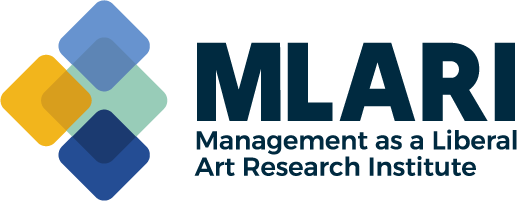Alexis de Tocqueville and The Future of Democracy: Part II
PUBLISHED:
In Part I of this series, I gave a brief overview of Alexis de Tocqueville’s background and project of evaluating American Democracy in the early 19th century. In this new installment, I’d like to share de Tocqueville’s observations about the nature of equality in America and how what he saw might help us understand some of the challenges democracies face today.
When de Tocqueville visited America in 1830-1831, the young nation was in the process of redefining equality both in social and political terms. As I noted earlier, the election of Andrew Jackson as president coincided with the expansion of suffrage to not just propertied white males, but to virtually all free white men. This was because as time passed from the founding of the nation in 1789, large property holdings were broken up and passed onto heirs (something de Tocqueville himself noted). In the younger frontier states, and even in the original colonies, governance required broader participation of the electorate. When the founders crafted the United States’ Constitution, they did not envision a democracy that involved a citizenry of the majority (and certainly not women or people of color).
While de Tocqueville has much to say about the political conditions in America, it is his commentary on the social ramifications of this changing nature of equality that is most fascinating (and, perhaps, particularly instructive for us today). As wealth was distributed from the few to the many, the concept of a wealthy propertied class began to fade away. This development was exacerbated by the growth in early industry in the East (notably textile manufacturing) which fueled a rising middle class in the cities. As de Tocqueville notes, the early landed gentry families had all but disappeared as their children became doctors, merchants, and lawyers, “commingled with the general mass.” As a result, he comments, Americans embraced a “middling standard” with respect to education and social station. We continue to see echoes of this as most Americans today would claim to be “middle class” even though it is statistically impossible for everyone to be in the “middle.”
Throughout his Democracy in America, de Tocqueville argues that the democratic obsession with equality has dramatic social and cultural consequences. What de Tocqueville refers to as “equality of condition” is not actual equality, but the belief in its primacy as an organizing principle for society. The concept of a meritocracy, where one rises or falls by one’s own efforts rather than by virtue of birth status or family heritage, was increasingly part of American culture by the 1830s; the concept of the “self-made man” was enshrined in popular culture from Benjamin Franklin’s work through the Horatio Alger stories of the 19th century. De Tocqueville observed that this insistence on self-making, on individual achievement, rips at the social fabric of relationships and interconnectedness. Individualism leads a person to “sever himself from the mass of his fellows” and leave “society at large to itself” (98). As one can no longer distinguish oneself in society by position or family status, one must now achieve individual success or power in order to ‘be someone’. This is a byproduct of equality of condition, because as de Tocqueville argues, no person really wants to be the same as everyone else. Deep down, no one truly desires absolute equality on a social level. The question is: how does someone achieve, in Drucker’s terms, status and function if the old order of aristocracy and class structure is swept away? That was one of the primary questions that De Tocqueville pondered as he studied the emerging American Democracy of the early 1800s.
One of the manifestations of the desire for status and function in a society obsessed with equality of conditions is an increasing focus on material success. De Tocqueville was fascinated by the “restlessness” with which Americans lived in such prosperity. This is one of my favorite passages from Democracy in America:
In the United States a man builds a house in which to spend his old age, and he sells it before the roof is on; he plants a garden and lets it just as the trees are coming into bearing; he brings a field into tillage and leaves other men to gather the crops; he embraces a profession and gives it up; he settles in a place, which he soon afterwards leaves to carry his changeable longings elsewhere. If his private affairs leave him any leisure, he instantly plunges into the vortex of politics; and if at the end of a year of unremitting labor he finds he has a few days’ vacation, his eager curiosity whirls him over the vast extent of the United States, and he will travel fifteen hundred miles in a few days to shake off his happiness. Death at length overtakes him, but it is before he is weary of his bootless chase of that complete felicity which forever escapes him.
De Tocqueville describes what we have, in various periods of time, called “keeping up with the Joneses” or “keeping pace” – the desire to match or supersede others’ social status and lifestyles. When the old systems of class stratification disappear, economic success often becomes a marker of achievement in democratic societies. This leads to not just consumerism, but also the “disquietude” that De Tocqueville noticed. Nothing is ever good enough, because one is always measuring oneself against the prosperity of neighbors, co-workers, and associates. Time is short, and “anxiety, fear, and regret” occupy the mind as we worry about what we are missing out on and what we haven’t achieved.
As we think about current modern democratic societies, we can see how this obsession with equality of condition and its associated pressures on the need for status and function have only become more exaggerated. De Tocqueville’s work paved the way for Drucker’s argument against an “Economic Man”: a promise of equality based on either a capitalist or socialist system. Socioeconomic equality is not only impossible; it runs against human nature. Furthermore, Drucker’s theory of a knowledge society, a society based on education and knowledge as capital, makes this even more complicated. The more educated people not only make more money, but they also wield more influence politically and socially. Drucker saw this as early as the 1950s, but it is more obvious today. Now, democratic societies face the perception of an elite ruling class in government, academia, business, and other institutions. The “us” vs. “them” mentality pits this elite class against “the middle” – the average person who feels neglected and missing out, “weary of his bootless chase.” Because we have embraced equality as a passion, democracies are perceived as failures in their ability to uphold the promise of economic and social equality for all. The result is a global rise in populism, a rage against the elite establishment, and a desire to tear down institutions. We have seen this play out in political developments in Poland, Italy, Germany, and the United States.
What is the solution to this predicament? Should we not pursue equality? Drucker made the case that free societies needed to provide avenues for status and function for all of its members, which meant that economic success and educational achievement could not be the only avenues for being part of society. If a portion of society sees itself as outcasts, as unable to ‘be someone’ or contribute meaningfully, they will perceive that democratic institutions have failed them. The only way for democratic societies to function is to uphold some faith in equality of condition for all. Once the belief in fundamental principles is lost, there is little glue to hold societies together. The key is how we define “equality”; as Drucker and de Tocqueville showed us, promises of economic equality are destined for failure. But democratic societies can afford all of its members human dignity and a sense of purpose.
In the next installment, I’ll provide some of de Tocqueville’s suggestions for strengthening democratic institutions.
Sources
Tocqueville, A.D. and Reeve, H. (1835). Democracy in America. London: Saunders and Otley, to 1840.





